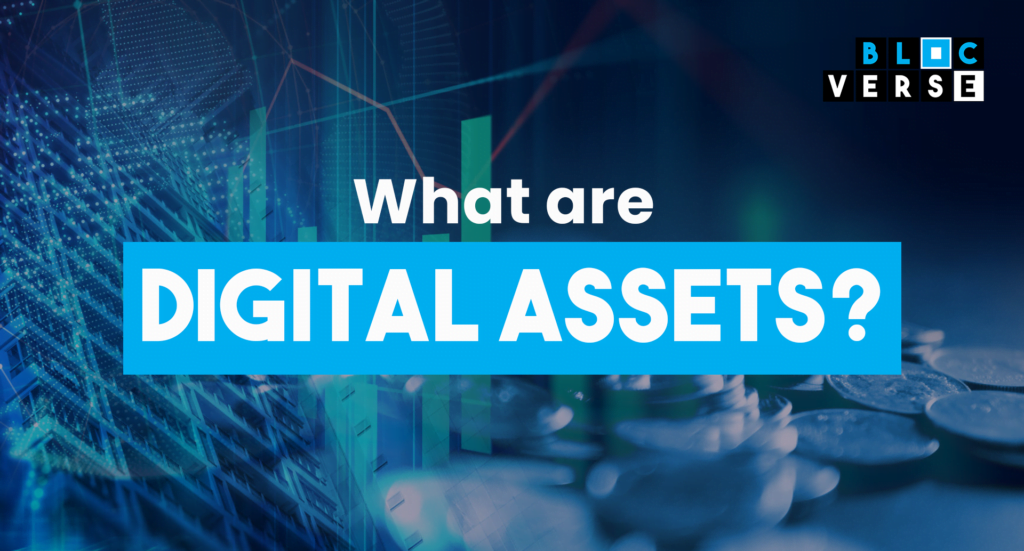Digital assets have become more popular and valuable as technological advancements become integrated into our personal and professional lives. Data, images, video, written content, and more have long been considered digital assets with ownership rights.
Most digital items, like a company’s brand, can be assigned a value, monetary or intangible. These assets can mean many things and might only be valuable to the creator or just a few people. For some, it can be a family picture taken at a gathering. For others, it could be valuable to a much wider audience.
In the past, digital assets such as data scanned documents or digital books were owned and used by organizations as they offered one value or the other. But now they have taken a whole new turn since the integration of Blockchain technology and cryptocurrency in 2009.
Anything in digital form became something you could use to create value via tokenization on a blockchain. Eventually, people found ways to use blockchain to secure ownership of digital items, which gave those assets value over time.
In this article, we will be looking at:
- What are digital assets?
- The Importance of Digital Assets and
- Five Ways to Manage Your Digital Assets
Let’s go, Digital!
What are Digital Assets: An Introduction

A digital asset is generally anything that is created and stored digitally, is identifiable and discoverable, and has or provides value.
Digital Assets for Blockchain revolves/centered around creating unique digital representations of assets created and stored in a digital format, enabling you to trade any asset with more liquidity and speed at a lower cost.
Now the term “digital assets” has been redefined since the inception of blockchain technology, and thousands of new assets have emerged, including cryptocurrency, NFTs, tethered currency, and the likes of them.
These assets can be highly volatile due to the market and might represent a risky investment, although they’re an accepted asset class among investors.
The Importance of Digital Assets

When you look at a list of the digital items that can be considered assets, it becomes clear that everything we do is more digitally-based than ever. For instance, when we’re looking to learn about something, we turn to digitally hosted information because it is quicker, and we get to do it in our comfort zones, which is easier than going to a library in the hopes they’ll have the resources we’re looking for.
Our photos, entertainment, and important documents are mostly in digital form. Businesses and governments keep and store data and information, all of which have different values depending on how you can use them.
When investors, governments, and the general public became aware of blockchain technology, digital assets took on an entirely new meaning. Blockchain technology has brought even more digital solutions since its inception because people placed a high value on them, whether they were intended to be used as assets or not.
Our everyday lives are filled with these assets. Here’s an example of a digital asset enhanced day: You wake up one morning and head out to see that your favorite footballer uploaded a video of him scoring a goal, so you purchase it and, in turn, now own part of that moment.
Five Ways to Manage Your Digital Assets

As blockchain becomes more and more prominent in the Digital Asset Management (DAM) space, here, we’ll be looking at five ways you can manage your digital assets using blockchain technology.
1. Smart contracts will significantly increase the value of blockchain for Digital Asset Management. Even though smart contracts are not required to use blockchain for transactions, eliminating the middleman to guarantee obligations are met is undoubtedly a compelling idea for those who produce, sell, and buy digital content. Thanks to the immutable record of all previous transactions and changes, greater confidence is made possible even without smart contracts.
2. Blockchain has significant potential for use in rights management. By allowing the distribution of digital assets but not their replication, blockchain adds a layer of security against the misuse or unauthorized use of assets or information.
3. Significant factor to consider while designing a blockchain for DAM or choosing DAM providers with blockchain capabilities is whether a blockchain is public or private. Since private blockchains are naturally not accessible to the general public, they are often more suitable for applications requiring higher levels of security. Or even public blockchains that prioritize security with the use of zkSNARKS.
4. According to General Data Protection Regulation (GDPR) standards, you cannot keep personal data in an immutable form, but blockchain ledgers are by their very nature immutable. To comply with GDPR, be selective about the data you store on the blockchain, utilizing it only for information that needs to be transferred between systems or parties.
5. Keeping them in a cryptocurrency wallet.
Crypto wallets are among the most effective ways to store and manage your digital assets. This method gives you the right to transfer ownership of your assets through purchase, gifting, or other means of giving the rights to someone else, along with the value the item can bring.
Bottom line
For an asset to be considered digital, it must first have the potential to create value in that you can use it in a manner that generates value for you.
Hence, we live in a digital world, and these assets have become part of our everyday life, starting from the images you take, the digital books you read, the tokens you own, and this content right here.
The world is going Digital; trust me, you don’t want to be left out. 😉
Let’s go Digital together!!!


[…] Digital Assets-Five Ways to Manage Your Digital Assets […]